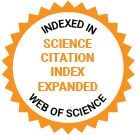Journal of Medical Internet Research
The leading peer-reviewed journal for digital medicine and health and health care in the internet age.
Editor-in-Chief:
Gunther Eysenbach, MD, MPH, FACMI, Founding Editor and Publisher; Adjunct Professor, School of Health Information Science, University of Victoria, Canada
Impact Factor 5.8 CiteScore 14.4
Recent Articles

General awareness and exposure to generative artificial intelligence (AI) have increased recently. This transformative technology has the potential to create a more dynamic and engaging user experience in digital mental health interventions (DMHIs). However, if not appropriately used and controlled, it can introduce risks to users that may result in harm and erode trust. At the time of conducting this trial, there had not been a rigorous evaluation of an approach to safely implementing generative AI in a DMHI.

With the introduction of Regulation (EU) 2017/745, also known as the Medical Device Regulation (MDR), startups aiming to develop software as a medical device (SaMD) in the European Union are confronted with stringent and complex regulations, and many of them struggle with them. Complying with the MDR is a costly, time-consuming endeavor requiring expertise and substantial financial resources. However, it opens the door for new revenue models, such as reimbursement pathways. Consequently, the MDR significantly shapes the business model of startups. Early on, the regulation needs to be considered for business modeling to survive the conformity assessment process financially. Business model frameworks are tools that reduce complexity by focusing on the key aspects of a business model. Thereby, the risk of overlooking essential elements can be minimized. A framework directly integrating the MDR could alleviate the intricate circumstances in which SaMD startups are entangled.

Appropriate outcome assessment strategies and high-quality trials are critical to advancing care of patients with acute and chronic pain. Using extended reality (XR), namely, virtual and augmented reality, as a nonpharmacological treatment for pain has accelerated in the last decade. XR allows users to engage completely in immersive, gamified, sensorial digital experiences. Currently, no standardized approach to assessing outcomes of XR-based interventions for pain exists.

Obesity is a chronic complex disease associated with increased risks of developing several serious and potentially life-threatening conditions. It is a growing global health issue. Pharmacological treatment is an option for patients living with overweight or obesity. Digital technology may be leveraged to support patients with weight loss in the community, but it is unclear which of the multiple digital options are important for success.

Kidney stones, a prevalent urinary disease, pose significant health risks. Factors like insufficient water intake or a high-protein diet increase an individual’s susceptibility to the disease. Social media platforms can be a valuable avenue for users to share their experiences in managing these risk factors. Analyzing such patient-reported information can provide crucial insights into risk factors, potentially leading to improved quality of life for other patients.


As the US Food and Drug Administration (FDA)–approved use of artificial intelligence (AI) for medical imaging rises, radiologists are increasingly integrating AI into their clinical practices. In lung cancer screening, diagnostic AI offers a second set of eyes with the potential to detect cancer earlier than human radiologists. Despite AI’s promise, a potential problem with its integration is the erosion of patient confidence in clinician expertise when there is a discrepancy between the radiologist’s and the AI’s interpretation of the imaging findings.


Telemedicine, which incorporates artificial intelligence such as chatbots, offers significant potential for enhancing health care delivery. However, the efficacy of artificial intelligence chatbots compared to human physicians in clinical settings remains underexplored, particularly in complex scenarios involving patients with cancer and asynchronous text-based interactions.

Data dashboards can be a powerful tool for ensuring access for public health decision makers to timely, relevant, and credible data. As their appeal and reach become ubiquitous, it is important to consider how they may be best integrated with public health data systems and the decision-making routines of users.

The recent emergence of wearable devices has made feasible the passive gathering of intensive, longitudinal data from large groups of individuals. This form of data is effective at capturing physiological changes between participants (interindividual variability) and changes within participants over time (intraindividual variability). The emergence of longitudinal datasets provides an opportunity to quantify the contribution of such longitudinal data to the control of these sources of variability for applications such as responder analysis, where traditional, sparser sampling methods may hinder the categorization of individuals into these phenotypes.
Preprints Open for Peer-Review
Open Peer Review Period:
-
Open Peer Review Period:
-
Open Peer Review Period:
-
Open Peer Review Period:
-

















